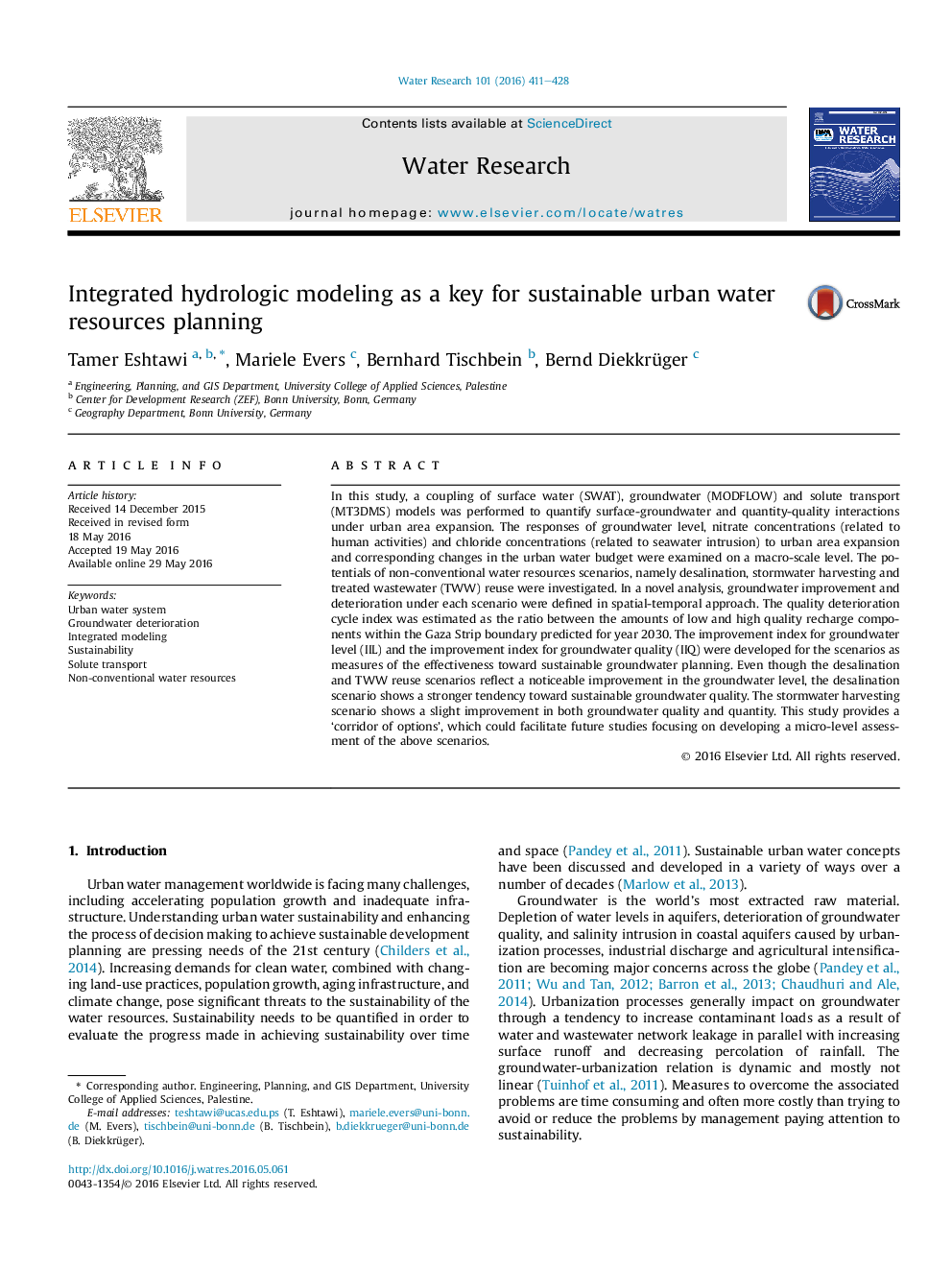| Article ID | Journal | Published Year | Pages | File Type |
|---|---|---|---|---|
| 6364883 | Water Research | 2016 | 18 Pages |
Abstract
In this study, a coupling of surface water (SWAT), groundwater (MODFLOW) and solute transport (MT3DMS) models was performed to quantify surface-groundwater and quantity-quality interactions under urban area expansion. The responses of groundwater level, nitrate concentrations (related to human activities) and chloride concentrations (related to seawater intrusion) to urban area expansion and corresponding changes in the urban water budget were examined on a macro-scale level. The potentials of non-conventional water resources scenarios, namely desalination, stormwater harvesting and treated wastewater (TWW) reuse were investigated. In a novel analysis, groundwater improvement and deterioration under each scenario were defined in spatial-temporal approach. The quality deterioration cycle index was estimated as the ratio between the amounts of low and high quality recharge components within the Gaza Strip boundary predicted for year 2030. The improvement index for groundwater level (IIL) and the improvement index for groundwater quality (IIQ) were developed for the scenarios as measures of the effectiveness toward sustainable groundwater planning. Even though the desalination and TWW reuse scenarios reflect a noticeable improvement in the groundwater level, the desalination scenario shows a stronger tendency toward sustainable groundwater quality. The stormwater harvesting scenario shows a slight improvement in both groundwater quality and quantity. This study provides a 'corridor of options', which could facilitate future studies focusing on developing a micro-level assessment of the above scenarios.
Keywords
Related Topics
Physical Sciences and Engineering
Earth and Planetary Sciences
Earth-Surface Processes
Authors
Tamer Eshtawi, Mariele Evers, Bernhard Tischbein, Bernd Diekkrüger,
